Expert’s Rating
Pros
- Economical to run
- Floor-standing or wall-mounting options
- Can adjust temperature without app
Cons
- Expensive
- Struggles to heat large rooms
Our Verdict
The Aeno Premium Eco Smart LED Heater looks good, heats well and is fairly cheap to run. The only snag is that it’s expensive to buy.
Price When Reviewed
Not available in the US
The cost of heating your home has risen dramatically over the past couple of years and there’s no sign it’s going to get cheaper any time soon. So any heater that claims to be able to keep you warm for less is always going to be attractive, and it’s one of the reasons people are going mad for electric blankets.
Heated blankets – or throws – are great if you don’t mind living in an otherwise cold home, but what if you want to heat a whole room, perhaps one that doesn’t benefit from central heating?
Infrared heaters like the Aeno Premium Eco Smart LED Heater use less power than convection heaters and heat objects rather than the air. However, the Aeno also uses convection to give you that warm-room feeling.
It sounds good, but is it worth spending a lot to get a more efficient heater?
Features & design
- 11m thick
- App controlled
- Floor standing or wall mount options
Design-wise, the Aeno is certainly attractive. It comes in black, white or grey and is essentially glass sandwich: there’s a panel of tempered glass front and back with what is presumably the infrared coils in the middle.
The whole thing is just 11mm thick, a metre wide and 365mm tall. Don’t accidentally buy the original model which looks identical: the new LED model has a display on its control panel to show the current (and ‘set by you’ temperature) plus buttons to adjust the temperature you want and a Smart button which toggles between constant heating and an energy-saving mode.
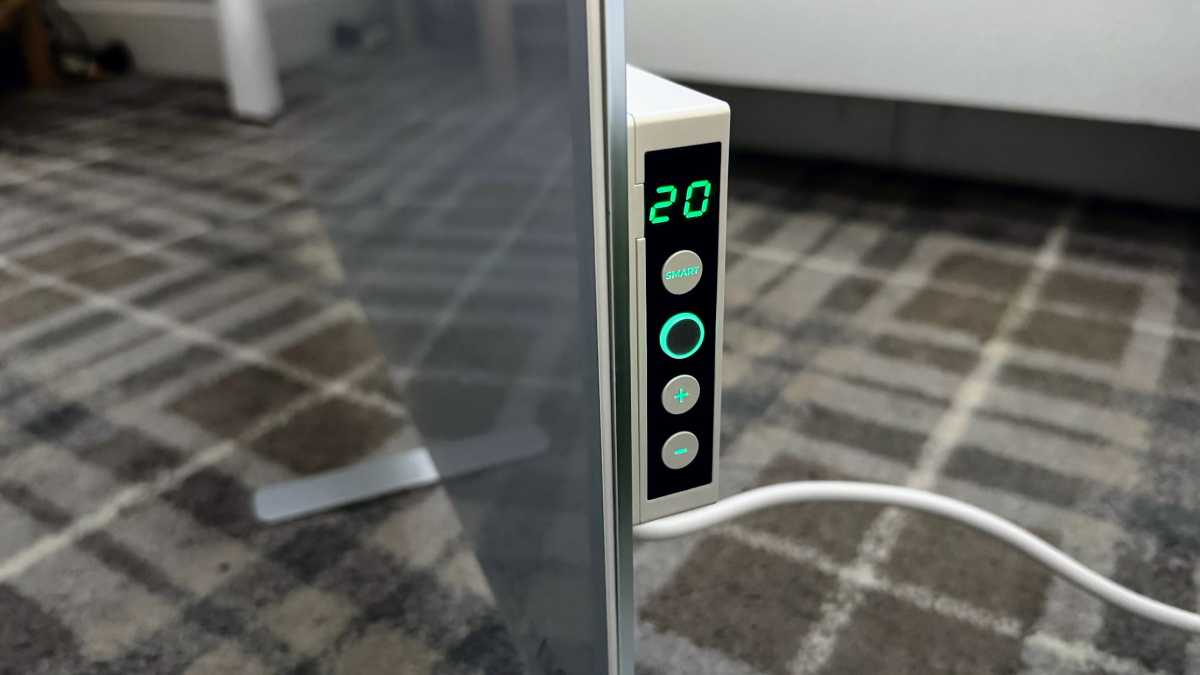
Jim Martin / Foundry
Don’t confuse the Aeno with other ‘glass panel’ heaters such as the Princess or the Devola that we’ve reviewed. Those use a lot more power and don’t use infrared.
In the box is a pair of feet if you want the heater to be freestanding, plus a pair of wall mounts. Both attach using thumbscrews, but you’ll need some tools to use the included screws and wall plugs for wall mounting.
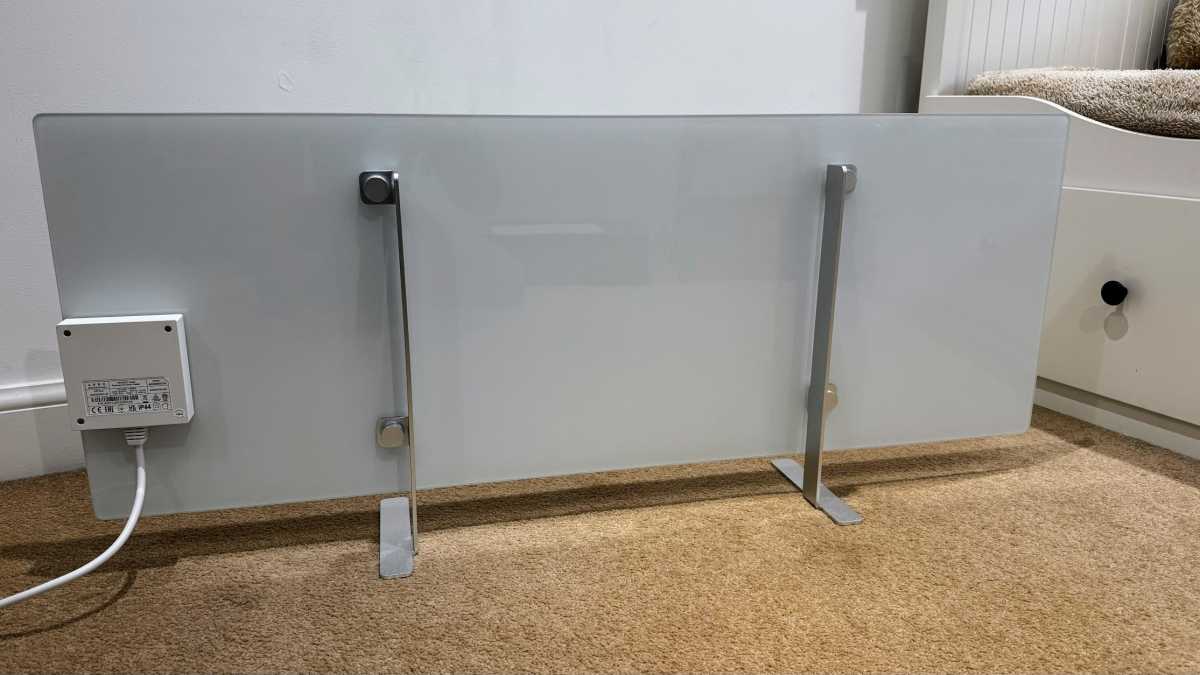
Jim Martin / Foundry
The Aeno Premium Eco Smart LED Heater can be mounted horizontally or vertically, but if you go for the latter, it’s very difficult to see the buttons and display. Otherwise, you just have to look round the side.
Via the companion app you can set the brightness of the display, which is a nice touch, and you can use it as a remote control to turn it on and off and change the temperature. There’s even a setting for “ceiling mounting” which is unusual.
Although one of the benefits of infrared heating is that the heater doesn’t get hot, the Aeno’s glass does because it’s both an infrared and convection heater
Although one of the benefits of infrared heating is that the heater doesn’t get hot, the Aeno’s glass does because it’s both an infrared and convection heater.
In the app you can set this temperature, from 60°C to 120°C. You’ll want to pick the lowest if you have kids, but the highest will heat up the room faster (and use the most power – more on that later).
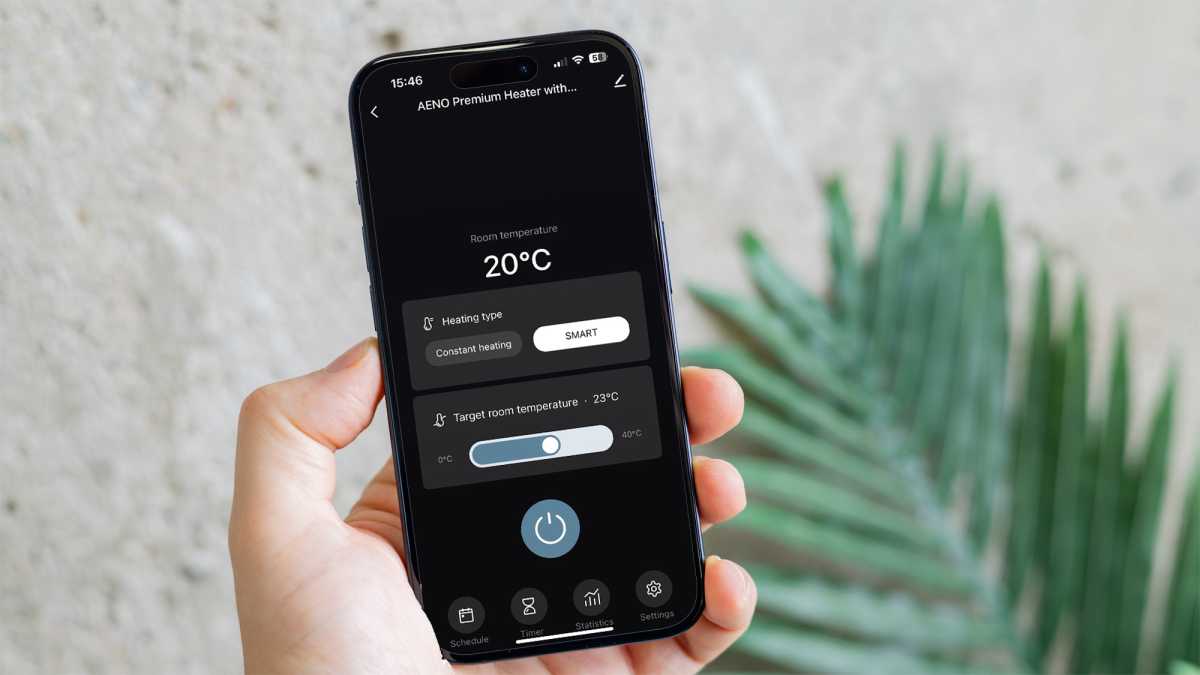
Jim Martin / Foundry
A useful safety feature is an auto cut-out which activates if the heater is knocked over.
Other useful app features are timers and schedules. Use the first to put the heater on for a set number of hours. The second is good if you want the heater to come on before you get up, say, and heat a room you’ll be in later on.
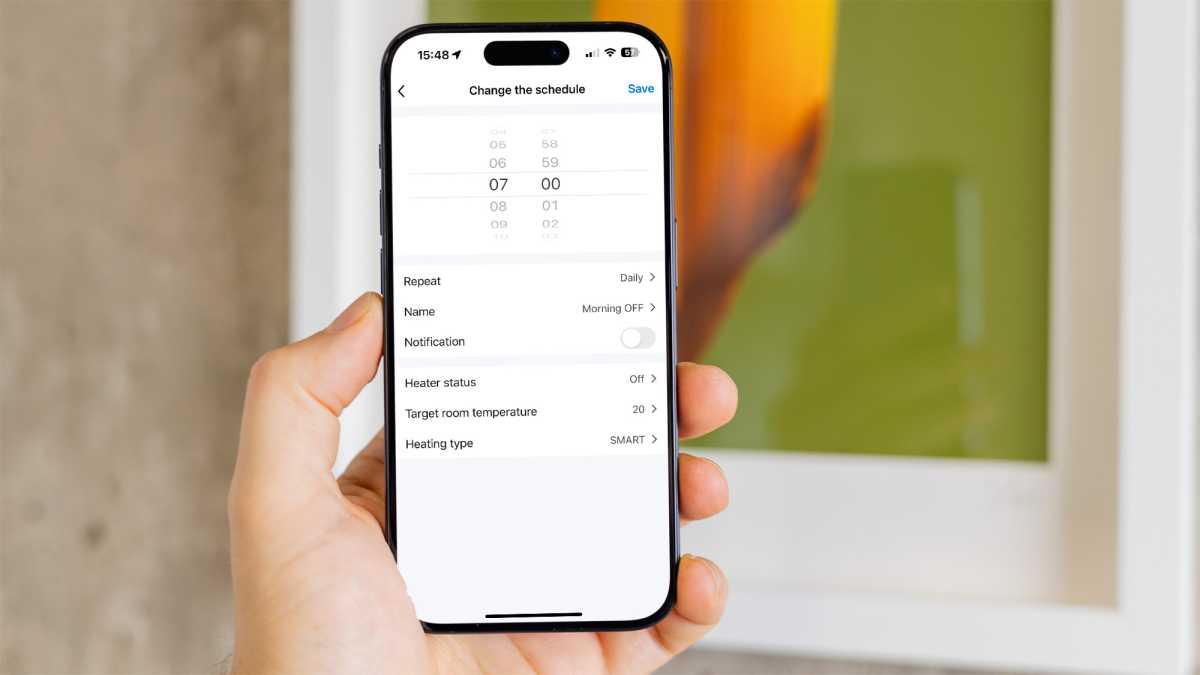
Jim Martin / Foundry
It’s also handy to have the app as a remote control if you put the heater in a garden room, as you can turn it on (and off) from the house without needing to go down the garden.
Handier still – if you have a hands-free smart assistant – is support for Alexa and Google Assistant. Once paired, you can not only turn the Aeno on and off with your voice but also set a specific temperature, just as with many other smart heating systems. The first thing you’ll need to do, though, is change the name from Aeno Premium Heater with Display, or you’ll have to say that mouthful every time you want to control it.
The Aeno Premium Eco Smart LED Heater works well, with the proviso that you’re using it in a relatively small, well-insulated room
Performance
- Ideal for rooms up to 15m²
- Efficient energy use
The Aeno Premium Eco Smart LED Heater works well, with the proviso that you’re using it in a relatively small, well-insulated room.
Aeno says it will heat spaces up to 30m², but that’s rather optimistic. It does well in spaces around a third that size (including insulated garden rooms), but I wouldn’t recommend it for anything over 20m², and definitely not in an uninsulated garage or other outbuilding.
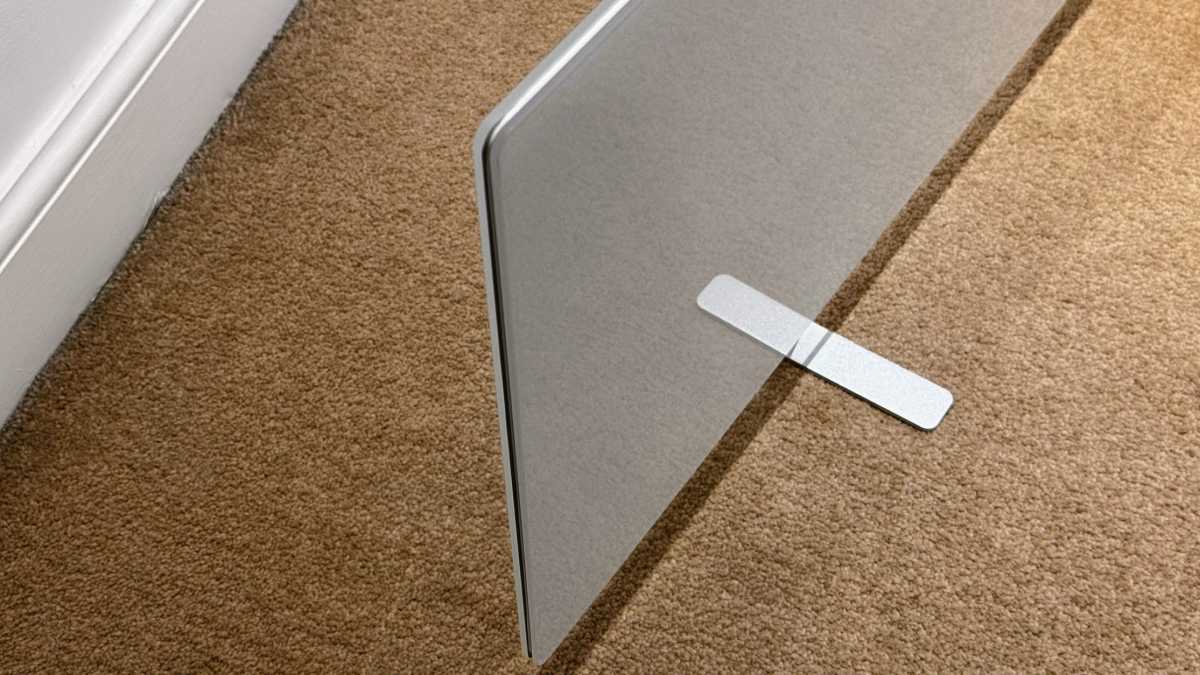
Jim Martin / Foundry
Using infrared means you’ll feel the heat instantly, similar to how it feels when you’re being heated by the sun.
Because of this, you need to position the Aeno so there are no objects between you and the heater, otherwise it will heat those instead.
Using infrared means you’ll feel the heat instantly, similar to how it feels when you’re being heated by the sun
The convection part – the hot glass panel – will warm the air in the room, just like a traditional radiator. Aeno says this is one of the Premium Eco Smart LED Heater’s highlights: it doesn’t use a fan to blow hot air (and allergens) around the room, and makes no noise.
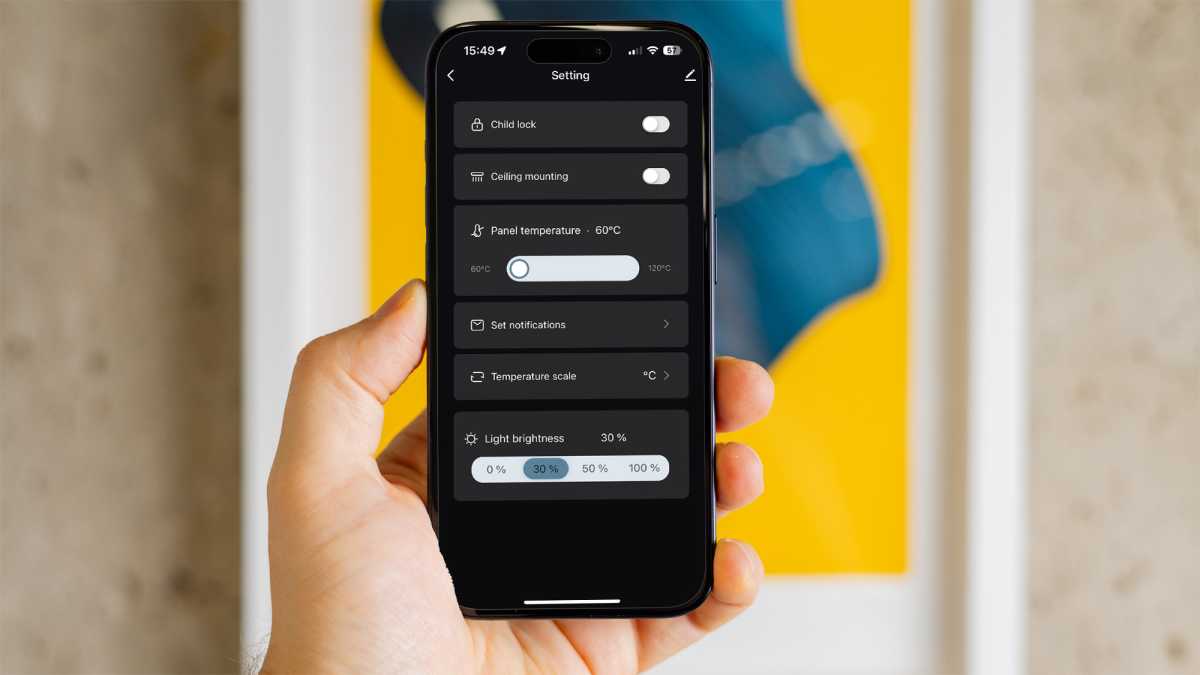
Jim Martin / Foundry
Of course, this is a relatively slow process, which can be speeded up by setting the panel to heat to 120°C. At this setting, the app reports the heater uses 783W, compared to around 160W when it’s set to 60°C.
Either way, this is a lot less than many other electric heaters which typically use at least 1000W, if not 2000W or 3000W.
It means the Aeno’s running costs are quite a bit less: under 0.8kW per hour. At current UK prices, that translates to around 22-25p per hour if you have it set to 120°C and constant heating.
Reduce the temperature and use the Smart heating mode and it’ll be even less.
The app tries to be helpful and display power and energy graphs on the Statistics tab, but in truth, they’re not that useful. You can hold your finger on a particular day to see how much energy was consumed, but there’s no way to see how long the heater was on, nor enter the amount you pay for electricity and see a summary of what it’s cost you.
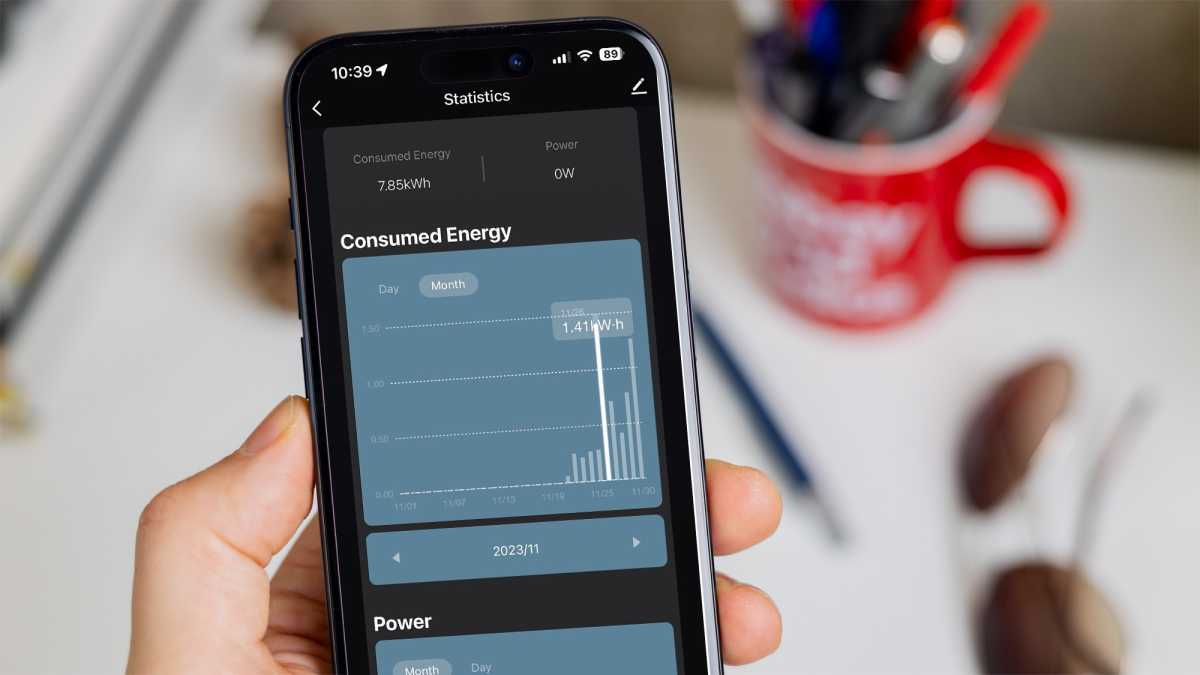
Jim Martin / Foundry
For this review, I used the heater in a living room around 3 x 3m, with the normal radiator turned off. The Aeno did a good job of heating the room to 20°C and keeping it there, although on a particularly cold December day with outside temperatures below freezing it took a good few hours to achieve that temperature, starting from a chilly 13°C.
The most energy used in a day was 1.41kWh, which is about 38p – not bad at all, especially when compared to the nearly-as-expensive Mill Gentle Air which, in our tests, costs about 70p for half a day’s heating. Don’t put too much weight on that comparison, though, as they were tested in different homes and different-size rooms.
There’s a running total in the top-left corner which tells me the heater has used almost 8kWh in three weeks, and a slightly pointless history of when the heater was turned on, off and was heating.
There’s no graph of temperature over time, which would have been nice to see how quickly the room heats up and what the room temperature was at any given moment.
Price & availability
The Aeno Premium Eco Smart LED Heater isn’t cheap. It’s billed as a designer radiator and costs £259.99 from various retailers including Amazon and Robert Dyas.
It isn’t available to buy in the US.
For alternatives, see our roundup of the best heaters.
Should I buy the Aeno Premium Eco Smart LED Heater?
If you want a heater that’s economical to run, and you don’t mind paying a premium up front for it, the Aeno is a fine choice.
It will save you money in the long run, but using my rough calculations, it’d take around a year of using it every day to break even compared to buying a ‘cheap’ £40 2Kw convection heater.
If you use it for five of the winter months, it means you’ll start saving in around two years’ time. Of course, there are benefits: the instant heat you get from infrared heating, all the smart features in the app and, of course, the fact it’s a nice-looking thing.
